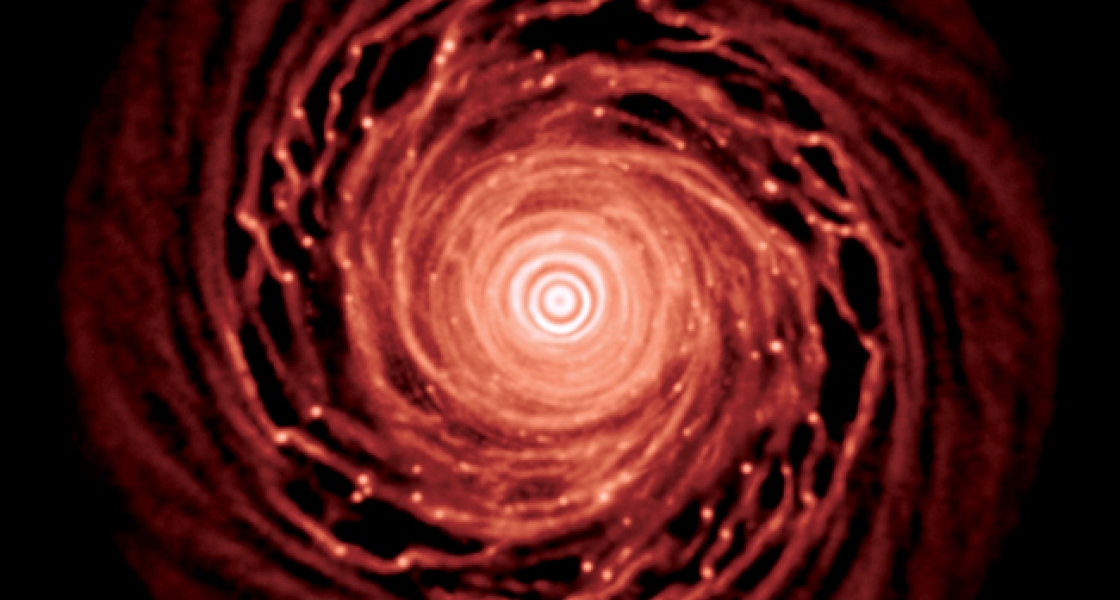Scientists believe that planetary systems coalesce from disks of gas and dust orbiting a star. Similarly, stars can form within massive accretion disks orbiting a black hole. Determining the mechanisms that create stars and planets from these orbiting disks is a hot topic among astrophysicists, according to JILA Fellow Phil Armitage and colleagues W. K. M. Rice of the University of California, Riverside, and G. Lodato of Cambridge's Institute of Astronomy.
The researchers are performing computer simulations to evaluate two competing theories that explain how planets form from accretion disks such as the one shown below. One theory posits that gravitational interactions in the disk cause clumps of gas to form, which then attract more matter to them, eventually forming planets.
Scientists debate whether giant gas planets could ever form via such a "gravitational collapse" mechanism. They believe that this mechanism is most likely to occur in the outer regions around a very massive black hole such as the one in the center of our galaxy. If they're right, this theory could explain why there are often lots of stars close to a black hole.
Evidence suggests that the successful creation of a planet or star from a disk depends on how efficiently an orbiting accretion disk can cool. If it cools sufficiently during the time it takes the disk to complete an orbital period, then some of the gas will collapse into clumps, initiating the formation of planets or stars. However, if the disk cools more slowly, the disk begins to behave like a spiral galaxy, forming spiral arms that direct much of the disk's mass into the central star or black hole. This mechanism likely plays a central role in the growth of both stars and massive black holes.
Armitage and his colleagues are investigating the gravitational collapse theory in more detail. Specifically, they are looking at the role of stress (caused by friction between different parts of the disk) in the formation of clumps. They've discovered that the amount of stress in the disk increases dramatically the faster the disk cools. And, the greater the stress in the disk, the more likely it is that gravitational collapse will occur.
While the researchers haven't proved which theory best explains planet and star formation from accretion disks, they have helped to explain how the cooling rate of a disk might determine which mechanism predominates in the creation of specific new stars and planets. The work reported here was published in the November 2005 issue of the Monthly Notices of the Royal Astronomical Society. - Julie Phillips




